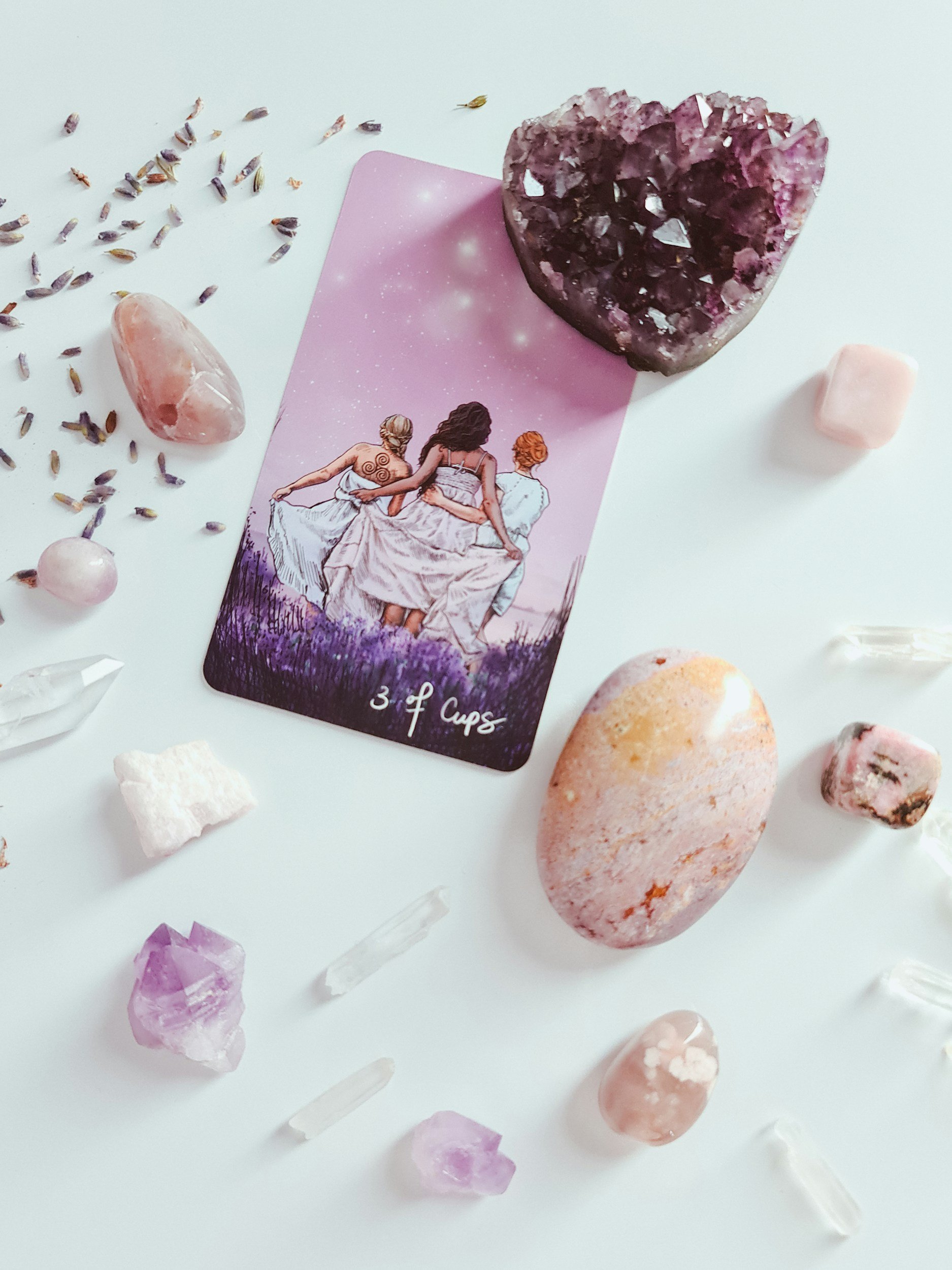
Tarot
The Enigmatic World of Tarot:
Tarot is one of the most captivating tools in the world of divination and personal insight. It’s both ancient and contemporary, with roots reaching back centuries and a modern relevance that continues to grow. Though often misunderstood, tarot is not just about predicting the future; it's a tool for self-reflection, guidance, and personal growth. In this article, we'll explore the history of tarot, how it can be used to enhance everyday life, and why each card holds a wide variety of interpretations.
The History of Tarot: A Mysterious Beginning
Tarot’s origins are as mysterious as the cards themselves. Many believe that tarot emerged in 15th-century Europe, originally used for playing card games. The earliest known tarot decks, such as the Visconti-Sforza deck from Italy, were lavishly illustrated and commissioned by noble families. These early cards were not used for divination but as part of a game called "tarocchi”, which was similar to modern-day bridge.
It wasn’t until the 18th century that tarot began to take on a more mystical and esoteric role. French occultists, particularly Jean-Baptiste Alliette (known by his pseudonym, Etteilla), were among the first to associate tarot with fortune-telling and deeper spiritual meaning. Etteilla created one of the first tarot decks explicitly designed for divination, incorporating symbolic imagery that could be interpreted in a variety of ways. From there, tarot became a tool not only for predicting future events but also for providing insight into a person’s current path and emotional state.
In the late 19th century, the popularity of tarot as a divination tool soared, thanks in part to the work of the Hermetic Order of the Golden Dawn, a secret society devoted to the study of the occult. It was during this time that the Rider-Waite-Smith deck, created by Arthur Edward Waite and illustrated by Pamela Colman Smith, was published in 1909. This deck is perhaps the most iconic and widely recognized today, setting the standard for many modern tarot decks.
Tarot in Everyday Life: More Than Fortune-Telling
One of the biggest misconceptions about tarot is that it’s solely used to predict the future. While some readers do use it for that purpose, tarot is more commonly used as a tool for self-reflection, personal development, and guidance.
Each tarot reading is a conversation with the cards, and through them, a conversation with yourself. Whether you're seeking advice on a relationship, career decisions, or personal challenges, tarot can help you tap into your intuition. The cards don’t tell you what will happen; instead, they offer perspectives that you might not have considered.
For example, pulling the “Strength” card during a reading might encourage you to dig deep and find your inner resilience, reminding you that you have the power to overcome a challenge. Similarly, the “Fool” card might suggest that it's time to take a leap of faith and embark on a new journey with fresh eyes and an open heart.
By integrating tarot into your daily life, you can gain clarity on difficult decisions or challenges. Many people perform daily one-card readings as a form of mindfulness practice. Drawing a single card each morning can set the tone for your day, offering a specific focus or affirmation. Over time, this practice builds your connection with the cards and helps you become more in tune with your own intuition.
The Many Interpretations of Tarot Cards: An Ever-Evolving Practice
One of the most fascinating aspects of tarot is that there are no hard and fast rules when it comes to interpretation. Each card contains layers of meaning, and those meanings shift depending on the context of the reading, the question asked, and the intuition of the reader. Experience plays a significant role here—the more you work with tarot, the more personal the interpretations become.
Take the “Death” card, for instance. While it might initially seem ominous, it rarely indicates physical death. More often, it represents transformation, the end of one phase of life and the beginning of another. In contrast, the “Tower” card, with its imagery of destruction, might suggest upheaval or sudden change, but even this card can have positive connotations, indicating that old structures must fall apart to make way for growth.
There are also 78 cards in a tarot deck, divided into two main sections: the Major Arcana and the Minor Arcana. The Major Arcana represents significant life lessons or spiritual themes, while the Minor Arcana deals with everyday issues and situations. Within these two groups, each card tells its own story, from the joyful “Sun” to the introspective “Hermit”, and how they are woven together in a reading depends on both the reader’s intuition and the question being asked.
The beauty of tarot lies in this flexibility. As you develop your practice, you’ll find that your understanding of the cards evolves. Cards that once had a certain meaning to you may take on new significance in different readings. This is why tarot is often considered a lifelong study—it grows with you as you grow.
In the end, tarot is less about predicting the future and more about understanding the present. It’s a mirror reflecting the complexities of our thoughts, emotions, and experiences. By using tarot as a tool for introspection, you can deepen your connection with your inner self, enhance your everyday life, and make more informed decisions.
Whether you’re a beginner or an experienced reader, tarot offers endless possibilities for interpretation and insight. Its true magic lies not in foretelling events but in helping you find clarity, direction, and empowerment along your journey. As you continue to work with the cards, they become a trusted companion, revealing the wisdom that already exists within you.


